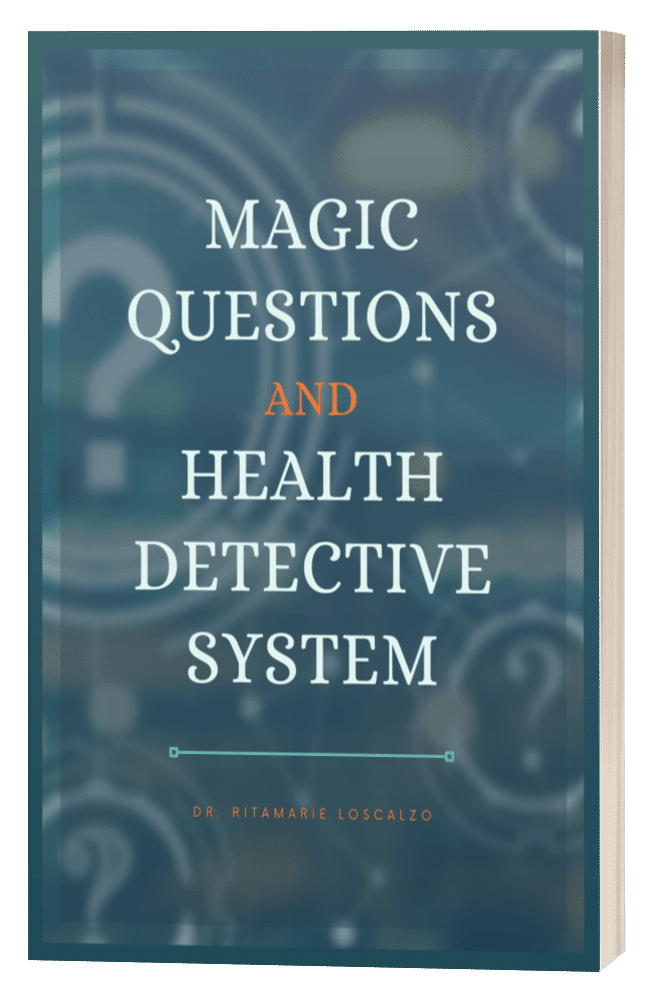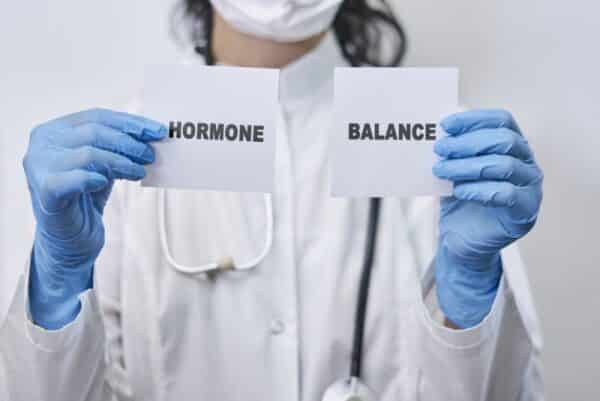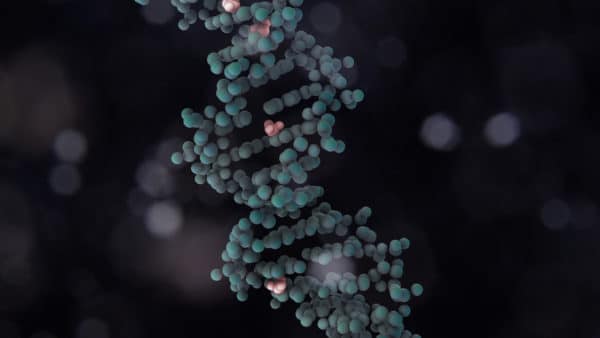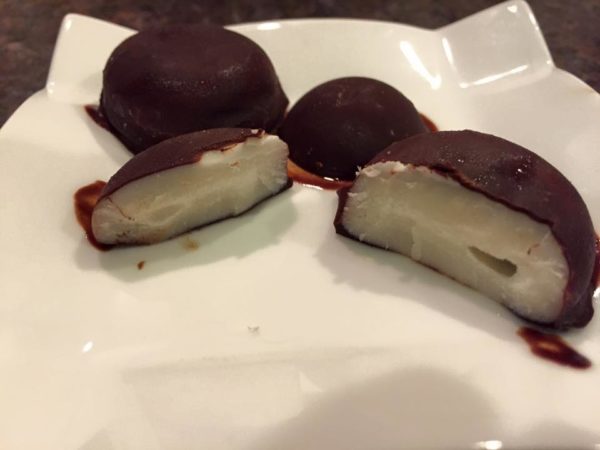

The only problem is we’re deficient in sunlight.
Most of us work indoors. And we’re taught by the “authorities” to be scared of the sun because it’s dangerous and can cause skin cancer. It’s said we must slather ourselves in sunscreen or wear protective clothing whenever we go outdoors.
We’ve created a Vitamin D deficient society by virtue of our lifestyles.
By protecting yourself from the sun, you may prevent one of the more benign forms of skin cancer — basal cell carcinoma; however, you do nothing to prevent the deadly form — malignant melanoma.
If you allow yourself to become Vitamin D deficient, you put yourself at risk for more serious forms of cancer than you prevent by avoiding sunlight. Incidences of colon, prostate, and breast cancer are significantly higher in a Vitamin D deficient person.
So What Exactly is Vitamin D and What Does It Do?
Vitamin D is not actually a vitamin.
It’s a prohormone and it’s responsible for over 2000 genes in the body.
Vitamin D is fat-soluble, which means it is stored in the liver and fatty tissues of your body and is slowly released.
Dietary Sources

The main, naturally occurring dietary sources are cod liver oil and salmon. The only significant plant sources of Vitamin D are mushrooms, in particular shiitakes; when mushrooms are exposed to ultraviolet (UV) light, the level of Vitamin D increases dramatically.
Another great way to get natural Vitamin D is through green foods. Foods become green because of chlorophyll, the green pigment present in green plants. Chlorophyll is also responsible for the absorption of light from the sun, thus getting the energy needed for photosynthesis. So you can receive your Vitamin D from the sun much as the plants do. The green plants with the most vitamin D are parsley, nettle, alfalfa, blue-green algae, chlorella, and horsetail.
Some foods are fortified with Vitamin D, such as homogenized milk.
Natural Sources
The dietary type of Vitamin D is D2, or ergocalciferol. While it is somewhat effective, it is felt that the Vitamin D produced naturally in your body by its reaction to the sun is more potent and effective.
The type of Vitamin D produced from within your own body when UVB rays from sunlight strike the skin and trigger Vitamin D synthesis – D3 – is also known as cholecalciferol.
Both forms of Vitamin D are formed when the UVB rays of the sun interact with a certain form of cholesterol, a lipid called 7-dehydrocholesterol. In humans, this cholesterol is found in the skin.
The Vitamin D at this point is still inactive. It then travels through the bloodstream to the liver where it is converted to a pre-hormone known as calcidiol, or 25-hydroxycholecalciferol, or 24-OH-D. This is the inactive storage form of Vitamin D that is used to measure your Vitamin D level in your blood samples. From there it travels to your kidneys where it is metabolized and becomes the active calcitriol, or 1,25-dihydroxycholecalciferol, or 1,24-OH-2-D3.
It is then released back into your bloodstream with the aid of a carrier protein – called the Vitamin D receptor – where it helps regulate how your body uses calcium and phosphorus. This Vitamin D – calcitriol – shows its biological effects by binding to Vitamin D receptors located in target organs and tissues, such as your intestines, brain, heart, and skin.
It reaches its maximum level approximately 24 hours after contact with the sunlight.
Vitamin D3 is manufactured mostly in the outer layer of the skin, the epidermis. Of these 5 separate levels of the skin, it is the cells in the lower 2 layers where Vitamin D3 is commonly found.
Benefits and Roles
The main role of Vitamin D is to promote calcium absorption in your gut and to maintain the normal level of calcium and phosphorus in your blood. Without sufficient Vitamin D, bones can become thin, brittle, or misshapen. Together with calcium, Vitamin D can help protect you from osteoporosis.
Vitamin D has other roles in your body in controlling cell growth, neuromuscular activities, immune function, and reduction of inflammation. There are many genes controlled by Vitamin D, including those that regulate cell growth, cellular differentiation in shape and function, and cellular death.
Common Conditions and Symptoms Associated with Vitamin D Deficiency
- Asthma
- Autism
- Autoimmune conditions (such as Hashimoto’s, Lupus, Ankylosing Spondylitis, Multiple Sclerosis, Rheumatoid Arthritis, and Crohn’s Disease)
- Cancer – particularly breast, colon, and colorectal
- Cystic Fibrosis
- Depression
- Diabetes (both Types 1 and 2)
- Epilepsy
- Fibromyalgia
- High Blood Pressure
- Migraines
- Muscle weakness
- Musculoskeletal pain, including joint pain and low back pain
- Obesity and excess weight
- Osteoarthritis
- Osteoporosis, Osteopenia, and Osteomalacia
- PCOS (Polycystic Ovarian Syndrome)
- Poor balance
- Rickets
- Schizophrenia
- Systemic inflammation
Tips to Improve Your Vitamin D Status
• Get outdoors and enjoy the sunshine for at least 20 – 30 minutes a day, preferably when the sun is highest in the sky.
• Avoid sunscreen for a full 20 – 30 minutes.
• Expose your arms and legs. You need to expose 40% of your skin to make sufficient Vitamin D.
• Be sure to avoid washing the exposed parts of your skin with soap for at least 48 hours to give your body a chance to absorb all the Vitamin D it produced as a result of the sunshine exposure.
• Load up on foods rich in antioxidants and beneficial fats that will strengthen your skin cells and protect them from sun damage.
• Get tested for Vitamin D. The 25, Hydroxyl Vitamin D test is the one most commonly used.
• Supplement with Vitamin D if you’re low.
The older you get, the more unhealthy you are, the harder it is for you to make Vitamin D.
During the winter in all locations north of Atlanta, Georgia, it is virtually impossible to get enough vitamin D, even with mid-day sun exposure. If you are darkly pigmented, you’ll need more sun exposure to make sufficient Vitamin D.
Vitamin D Supplementation
If you’re unable to get your daily dose of sunshine, then take a Vitamin D supplement.
Vitamin D3 is best absorbed and utilized. It’s usually from lanolin, which is from sheep. If you prefer vegan sources, here are 3 brands I recommend:
• Garden of Life Vitamin Code Raw: D3 Vitamin Supplement – 60 Capsules
https://drritamarie.com/wp-clone/go/GLD3
• Premier Research: D3 Serum – 2200 IU per drop
https://drritamarie.com/wp-clone/go/PRD3Serum
• Biotics Research: Bio-D-Mulsion Forte – 1 oz
https://drritamarie.com/wp-clone/go/BRBioD
Vitamin D2, a less well absorbed form of vitamin D, is another vegan option.
In general, Vitamin D supplementation is much less effective than sun exposure. It’s best to get sunlight exposure as much as possible, and only use the supplements when sunlight exposure is not possible.
However, it’s best to test to determine whether you’re getting enough. So many factors affect how well you derive Vitamin D from sunlight. Most people just don’t get enough. Even if you get plenty of sun exposure, it’s possible to become Vitamin D deficient.
You can overdose on Vitamin D. That’s why I recommend a baseline test before starting supplementation. You cannot overdose on Vitamin D via sunlight exposure, but you can with supplementation.
According to Dr. Mercola, you may need 3000 units of vitamin D per 100 lbs of body weight to correct a deficiency. In the case of cancer or severe auto immune disease, optimal may be in the range of 5000 units per 100 lbs of body weight. The human body, given the right conditions, can make up to up to 20,000 units in a day!
Vitamin D supplementation can be helpful for combating acute infectious disease, like the flu or a cold. In this case, you should take 2000 units /kg per of body weight each day for 3 days.
Vitamin D has a long half-life, which means that you can take it once a week rather than daily.
Vitamin D Testing
Testing for Vitamin D is very important to make sure you optimize your levels and avoid overdose. You should test 25-Hydroxy Vitamin D; not the more expensive 1,25 dihydroxy Vitamin D.
You can get tested by going to www.Directlabs.com.
Learn more about Vitamin D testing at Lab Tests Online. This is a site where you can find information about any lab test. It is very thorough and informative.
I have found in my practice that it’s SO important to get Vitamin D tested … not just once, but every 3 months, until your levels are in the optimal range (I target for 75 in general, but since there are so many factors involved, I tailor my recommendation to the person).
Vitamin D Levels — What’s Optimal?
>100 ng/mL Excessive vitamin D
75-100 ng/mL Proposed optimal range
50-75 ng/mL Suboptimal
<50 ng/mL Deficient
<20 ng/mL Seriously deficient
Vitamin D Level Optimization
For anyone with levels below 20, I generally recommend 10,000 and sometimes more for 3 months, then recommend retesting.
In many cases the levels come up to the 30s by then and I recommend the same for another 3 months. If the levels come up higher than 30?s, I’d probably drop that down a bit and retest in 3 months. If lower, I would increase the dose and monitor again soon.
The key is testing. If someone is really low and has serious conditions, like autoimmunity, I often recommend higher doses and retesting sooner.
If you decide to skip the test and just supplement with 2000 – 4000 IU you run the risk of not correcting the problem. If you supplement with 10,000 – 20,000 without testing, you run the risk of Vitamin D excess. It’s important to work with a trained practitioner. You are welcome to work with me in one of my Vibrant Living programs like B4 Be Gone Blood Sugar Balancing (B4BeGone), Correcting Adrenal Fatigue and Exhaustion (CAFE), or the Energy Recharge Coaching (ERC) program.
Additional Resources and Reading on Vitamin D
- Mercola.com “Daily Sunlight Can Keep Cancer Away” August 7, 2008
- Mercola.com “Lack of Sunshine Causes One Million Deaths a Year” August 24, 2007
- Dr. Joe Mercola Comments How Much Vitamin Do You Need?
- Video by Dr. Joe Mercola. 1 hour video with lots of details about Vitamin D
- Annals of Epidemiology April 14, 2009 Dr. Cedric Garland
- Annals of Epidemiology July 2009, Volume 19, Issue 7, Pages 468-483
- Science Daily, “New Model of Cancer Development: Low Vitamin D Levels May Have Role” May 26, 2009
- The Journal of Steroid Biochemistry and Molecular Biology March 2007; 103(3-5):708-11
- American Journal of Clinical Nutrition June 2007; 85(6):1586-91.
- American Journal of Epidemiology October 12, 2009
- Arizona Center for Advanced Medicine, “Vitamin D, Sun, Skin Cancer”, June 25, 2013
- Linus Pauling Institute, “Vitamin D”, June 22, 2011
- Hair Loss Revolution, August 11 2016, “Can Vitamin D Deficiency Cause Hair Loss?”
Share this:

Are you feeling stuck?
Do you feel as if something is missing from your practice that's keeping you from delivering breakthrough outcomes for your clients?.
Recent Posts
Our Programs
Nutritional Endocrinology Practitioner Training (NEPT)
The Mastery and Certification tier is our flagship program and provides everything you need to feel confident as a practitioner who knows how to get results that lead to healthy and happy clients.
Functional Assessment Mastery
Explore the relationships between the most important hormones and their relationship with nutrition.
Functional Nutrition Mastery
Learn how to support your clients to eat and supplement in a way that reduces and eliminates chronic symptoms.
Medical Disclaimer: The information on this website is not intended to replace a one-on-one relationship with a qualified health care professional and is not intended as medical advice. It is intended as a sharing of knowledge and information from the research and experience of Dr. Ritamarie Loscalzo, drritamarie.com, and the experts who have contributed. We encourage you to make your own health care decisions based upon your research and in partnership with a qualified health care professional.
Disclosure: Sometimes (but not always), when I share resources in my programs, newsletter, and on my website, I'm using an affiliate link, which means I do make money if you buy. My credibility is extremely important to me; therefore, I only endorse the products, services, and people I believe in. DrRitamarie.com is independently owned and the opinions expressed here are my own.
Click here to see our Privacy Policy.











Thank you for an excellent article with some very sound advice about how to use the natural sun for vitamin D creation in the way Mother Nature intended it.
But Vitamin D is probably only one of many advantages of getting enough UV-exposure. Some other benefits, like the cardiovascular healing Nitric Oxide, are also known, but many more remains “hidden”.
Seasonal and geographical variations in the occurrence of cancers, influenza other epidemics, shows that access to sunlight plays an important role for our immune-defence.
Sunbeds can help us even out any differences of living at different latitudes.
But sunbeds are demonized by the medical community for creating wrinkles and increase the risk of skin-cancers.
Here is some information about a new lamp for “red light therapy tanning”, which can drastically reduce at least the problem of premature ageing. (for skin-cancers, just keep the exposure moderate and the risk will actually decrease):
http://www.thetanningguru.com/red-light-therapy-tanning/red-light-therapy-tanning-lamp-skyrocketed-vitamin-d-level/
Hi, Karl,
You are correct, while discussions about the health benefits from sun exposure typically center around vitamin D, UVB exposure has a number of other health effects unrelated to vitamin D production, including enhancement of mood and energy, melatonin regulation, suppression of MS symptoms, and the treatment of skin diseases. Exposure to UVB light is also protective against melanoma (the most lethal form of skin cancer), whereas UVA radiation is associated with skin damage.
Two studies of critically ill children found that vitamin D deficiency is very common in sick children, and is associated with worse outcomes and extended hospital stays. Similarly, frail seniors with low levels of vitamin D have an increased risk of death. Correlations also exist between vitamin D levels and dental health. Researchers at the University of Manitoba, Canada, found that children with severe early childhood caries had significantly lower vitamin D levels than cavity-free children.
According to a featured Dermato-Endocrinology article:
“Solar ultraviolet (UV) radiation has been used since ancient times to treat various diseases. This has a scientific background in the fact that a large number of molecules (chromophores) in different layers of the skin interacts with and absorbs UV.
…Phototherapy is a valuable option in the treatment of many psoriatic and nonpsoriatic conditions, including atopic dermatitis, sclerosing skin conditions such as morphea, scleroderma, vitiligo, and mycosis fungoides. Phototherapy is the treatment of certain skin disorders with UV radiation which can be produced by the sun, fluorescent lamps, short arc lamps with UV filters and lasers.
Depending on the shape of the spectrum of radiation emitted by the source, phototherapy can be divided into broadband UVB (290-320 nm), narrow band UVB (310-315 nm), monochromatic UVB (308 nm from an excimer laser), broadband UVA (320-400 nm) and UVA-1 (340-400 nm).
…Traditionally, broadband UVB phototherapy has been used to treat psoriasis, which is an inflammatory skin disease, characterized by keratinocyte hyperproliferation with 1-2 percent prevalence in the general population. However, now more often narrowband UVB or monochromatic UVB are used for the clearance of psoriasis. Narrow-band UVB clears psoriasis faster and produces longer remissions than broadband UVB. Action spectra for UV-induced erythema, DNA damage, photoimmunesuppression, squamous cell carcinoma and vitamin D synthesis are very similar, all in the UVB spectral region of 280-310 nm.
Narrowband UVB do not contain the most erythemogenic and carcinogenic wavelengths.
…Sunbathing or tanning beds seem to have a potential to reduce pain in patients with fibromyalgia. Patients with the chronic pain condition fibromyalgia have reported a greater short-term decrease in pain after exposure to UV compared with non-UV radiation exposure…”
So thank you for sharing your information. We encourage you to read through our other blog materials, as well as joining us in the VITAL Health Community where we teach more about the importance of UV exposure.
Can high melatonin density act as a shield from UV rays? I have read that as long as you are not too fair skinned you have a natural protection with melatonin’s help. Myth or reality?
Recently German scientists found melatonin receptors in the skin. And they discovered the skin also produces melatonin. It’s a separate supply from the brain.
And there’s a good reason for that. It turns out melatonin stimulates the growth of fibroblasts. Those are cells that produce collagen and elastin. Your skin’s whole structural support depends on collagen and elastin. They make your skin smooth and wrinkle-free.
But fibroblasts are very sensitive to ultraviolet radiation. The same kind of light you get from the sun. When fibroblasts were exposed to UV rays in a lab, only 56% of them survived. But when researchers pretreated the cells with melatonin, 92.5% survived.